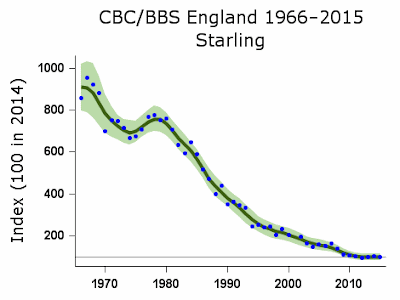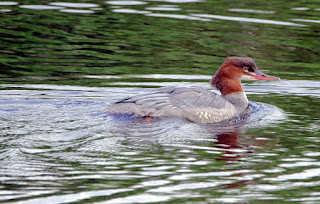Start time 0615. At last, a 4mph negligible wind and no rain. I met Andy at Pilling and we set a couple of single panel nets in time for Linnets to arrive from their overnight haunts and head for the seed plot.
Within 15 minutes we had our first catch. We went on to a total of 43 new Linnets with zero recaptures from previous occasions. Of the 43 ringed we had 5 adult males and 38 juvenile/first years, broken down further to 20 males and 18 females. This brought our overall total to 129 Linnets ringed in August, an excellent start to Project Linnet 2017/18.
Our maximum count of the flocks and smaller groups in attendance today was of approximately 200 Linnets at about 0930. The flock is almost entirely Linnets with just a handful of Goldfinches tagging along.
Linnet
Linnet
Readers of a certain age will certainly remember a ditty featuring the Linnet and made famous by Cockney (London) music-hall in the early part of the 20th Century. “My old man said "Foller the van, and don't dilly dally on the way", the story of a couple doing a “moonlight flit” from their house in the dark of the night to avoid paying rent owed to the landlord. Anyone who knows the song will remember how the wife continues the story in the Cockney dialect -“Orf went the van wiv me 'ome packed in it, I followed on wiv me old cock linnet.
The “old cock linnet” was the family pet – a linnet, a finch highly prized for its rich musical song a century and more ago. Around that period it has been estimated that 50% of households in Britain kept a cage bird. Linnets were the most popular of all because they were very numerous and huge numbers were taken from the wild to satisfy the whims of the time.
Cock Linnet
Cock Linnet - August 2017
From “Every Woman's Encyclopaedia” circa 1910 -1912.
Every Woman's Encyclopaedia 1910-192
“There are five other members of the family of the Fringillinae which well deserve notice, as they are very suitable for pets. They are the linnet, siskin, redpoll, twite, and crossbill.
The linnet claims the first place in popularity, and is one of the best of our British songsters.
Its notes are very sweet and soft, although on this point individual birds vary, some being far better songsters than others. Old birds have a much fuller and better song than young birds, and are thus sought after by those who know of this characteristic.
The cock linnet varies considerably at different periods of his life in the colours of his plumage, a fact which has led to the belief that there are several varieties of linnets, whilst, in reality, this variation in the colour of the plumage depends on the age of the bird.
For instance, birds of a year old are called grey linnets, the feathers on the head and breast being edged with grey. Adult birds in the spring assume what is termed the breeding plumage, when the feathers on the head and breast become bright red, and the whole plumage brighter and more intense in colour. These birds are known as rose linnets. This red colouring quite disappears from birds in captivity.
During the autumn and winter months the plumage of the adult birds becomes a rich brown, and they are then known as brown linnets.
The plumage of the female bird does not vary, and is very similar to that of a young male bird. It is of a sombre colour, with less white on the wings and tail, and never possesses any crimson plumage on head and breast.
The linnet is naturally a shy bird, but in confinement becomes quite tame and makes a very pleasing and interesting pet. In their wild state linnets become gregarious in winter, and may often be seen in the open country feeding on the seeds of wild mustard, sharlock, and other plants.”
Stand by soon for more Linnet tales, old and new from Another Bird Blog.
Linking this post to Stewart's World Bird Wednesday.
Linking this post to Stewart's World Bird Wednesday.














































































